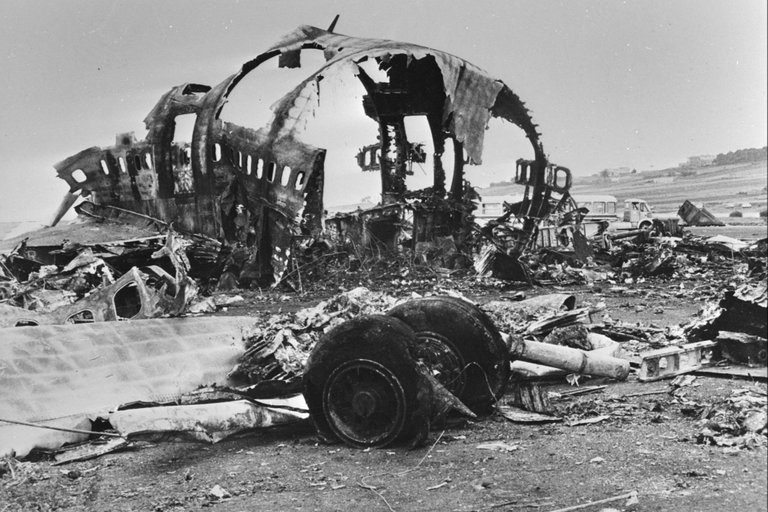The Tenerife Airport Disaster
Read this post on TravelFeed.io for the best experience

Did you know that the deadliest disaster in aviation history happened on Tenerife? In March of 1977, two planes collided at Tenerife North Airport, resulting in the loss of 583 lives. It was an event which shocked the world, and forever changed airline safety standards.
The story began with a bomb. On the morning of March 27th, members of the Canary Islands Independence Movement exploded a device in the airport of Las Palmas, Gran Canaria, injuring six people. They also issued a warning that a second bomb was due to explode. As a result, all flights arriving into Las Palmas were diverted to nearby Tenerife.
 Tenerife Plan Collision - CC0 1.0 License via Wikepedia
Tenerife Plan Collision - CC0 1.0 License via Wikepedia
At the time, the small airport outside La Laguna was the only one on Tenerife, and was known as Los Rodeos (the name would later change to Tenerife North, once a larger airport was built in the south). With just a single runway and taxiway, Los Rodeos wasn’t nearly large enough to accommodate all the incoming traffic, and planes were forced to park wherever they could find space.
And then the fog rolled in, reducing visibility to almost nothing. But despite the low visibility and crowded conditions, flights were allowed to continue. A 747 from KLM misinterpreted instructions from the control tower, and accelerated for takeoff, while another 747 from Pan Am was still taxiing. By the time the pilots saw each other through the fog, it was too late. A last-ditch evasion effort was fruitless, and the airplanes collided at about 260 kmh (160 mph). Everyone aboard the KLM flight lost their lives, along with 335 of the 396 aboard the Pan Am flight.
Because of the role miscommunication played in this disaster, the aviation industry introduced standard phrases to be used around the world, and prioritized English as a shared language. Another change was to the power dynamic in the cockpit — an in-depth audit determined that the KLM crew was overly deferential to their captain, and kept quiet even when they knew he was making a mistake. The disaster might have been avoided had they spoken up. A modern training methodology called Crew Resource Management, which seeks to eliminate accidents caused by human error, has its origins in the Tenerife disaster and is now taught as a standard around the world.
-From our Tenerife Travel Blog
https://www.instagram.com/p/CMw5dgKBbiB/

Congratulations, your post has been added to Pinmapple! 🎉🥳🍍
Did you know you have your own profile map?
And every post has their own map too!
Want to have your post on the map too?
Awesome content! keep up the good work
Your posts ain't bad either! Love running into fellow travelers on here. I'm one of the co-founders of @travelfeed - travelfeed.io which is a platform every travel blogger ever wanted :)
Very cool im going to check it out right now! Travelers unite 🤙
Congratulations @for91days! You received the biggest smile and some love from TravelFeed! Keep up the amazing blog. 😍 Your post was also chosen as top pick of the day and is now featured on the TravelFeed.io front page.
Thanks for using TravelFeed!
@smeralda (TravelFeed team)
PS: TravelFeed is in social media to reach more people, follow us on Facebook, Instagram, and Twitter.